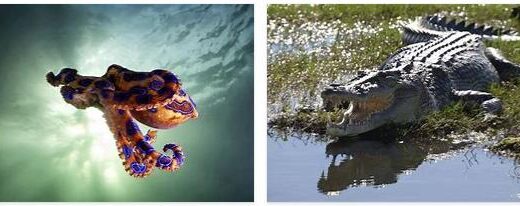Samoa 2018
Samoa is a country located in the South Pacific with an estimated population of 200,000 people. The economy is largely based on agriculture and fishing, with the main exports being coconut cream, cocoa and taro. In terms of foreign relations, Samoa is a member of the United Nations and other international organizations such as the Pacific Islands Forum. According to extrareference, Samoa is a parliamentary democracy with an elected prime minister who serves as head of government while the head of state is the O le Ao o le Malo (Head of State). In 2018, Tuilaepa Aiono Sailele Malielegaoi was reelected to serve another term in office as Prime Minister of Samoa.
Yearbook 2018
Samoa. During the year, Samoa followed Palau, Kiribati and the Cook Islands when in March their surrounding water turned into shark sanctuaries. According to Countryaah.com, Apia is the capital city of Samoa, a country located in Polynesia. Prime Minister Tuila’epa Sailele therefore wants to be able to help maintain an important part of the marine ecosystem. Every year, millions of sharks are killed for their fins, which has resulted in several species being threatened. In 2009, Palau established the world’s first shark sanctuary.
- According to Abbreviationfinder: ASM is an three letter acronym for Samoa.
At a speech in August during a visit to Australia, Samoa’s Prime Minister strongly criticized the world’s climate skeptics. He said that the US, China and India are basically responsible for several Pacific island states becoming so severely exposed as the weather gets warmer due to climate change. “Leaders from one of the countries who think that there are no climate change, I think should be taken to mental hospitals. He is extremely stupid, and I say the same about any leader here who says that climate change does not exist, “Prime Minister Sailele said.
HISTORY
Samoan society appeared on the threshold of the year 2000 still strongly characterized by traditional forms of political participation, based on family clans structured in a rigidly hierarchical manner. The main parties on the island referred to them, the conservative National Development Party of Samoa and the centrist Party for the Protection of Human Rights which, in power since 1982, effectively held the country’s political monopoly. Although it suffered a decline, it had once again managed to assert itself in the general elections held in March 2001. The prospect of forming a coalition government among the opposition forces, which together reached the majority of seats, failed in the face of the defection of seven newly elected deputies who guaranteed their support for the Party for the protection of human rights, allowing Tuila’epa Sailele Malielegaoi reconfirms her as head of the executive.
In the following years the internal situation remained stable and an improvement in the economic situation was recorded, only partially compromised by the serious damage to the infrastructures caused by the violent cyclone that hit the archipelago in January 2004. In the same month the unanimous vote of the Parliament allowed the abolition of the death penalty.
The political elections of March 2006 once again rewarded the ruling party, which won 33 of the 49 seats up for grabs; the United Democratic Party (name assumed by the National Development Party of Samoa after the 2001 elections) won 10 seats while 6 seats went to independent candidates; the Party of Samoa, formed in 2005, did not get even one. Tuila’epa Sailele Malielegaoi was confirmed as prime minister.
In foreign policy Samoa continued to maintain close contacts with New Zealand, while conflicts arose with American Samoa; in September 2004 the government started with these last negotiations for the official definition of the maritime borders.



